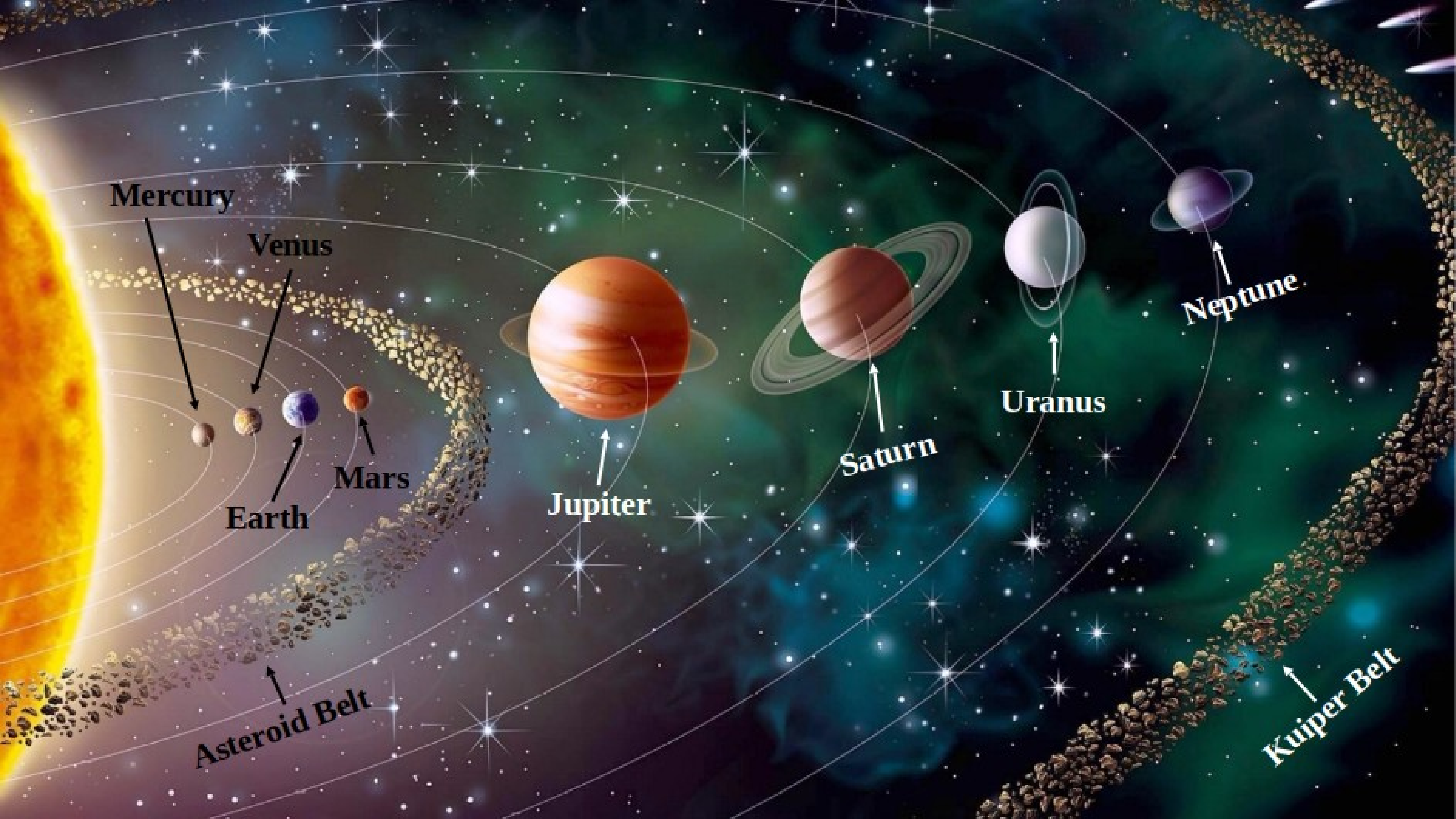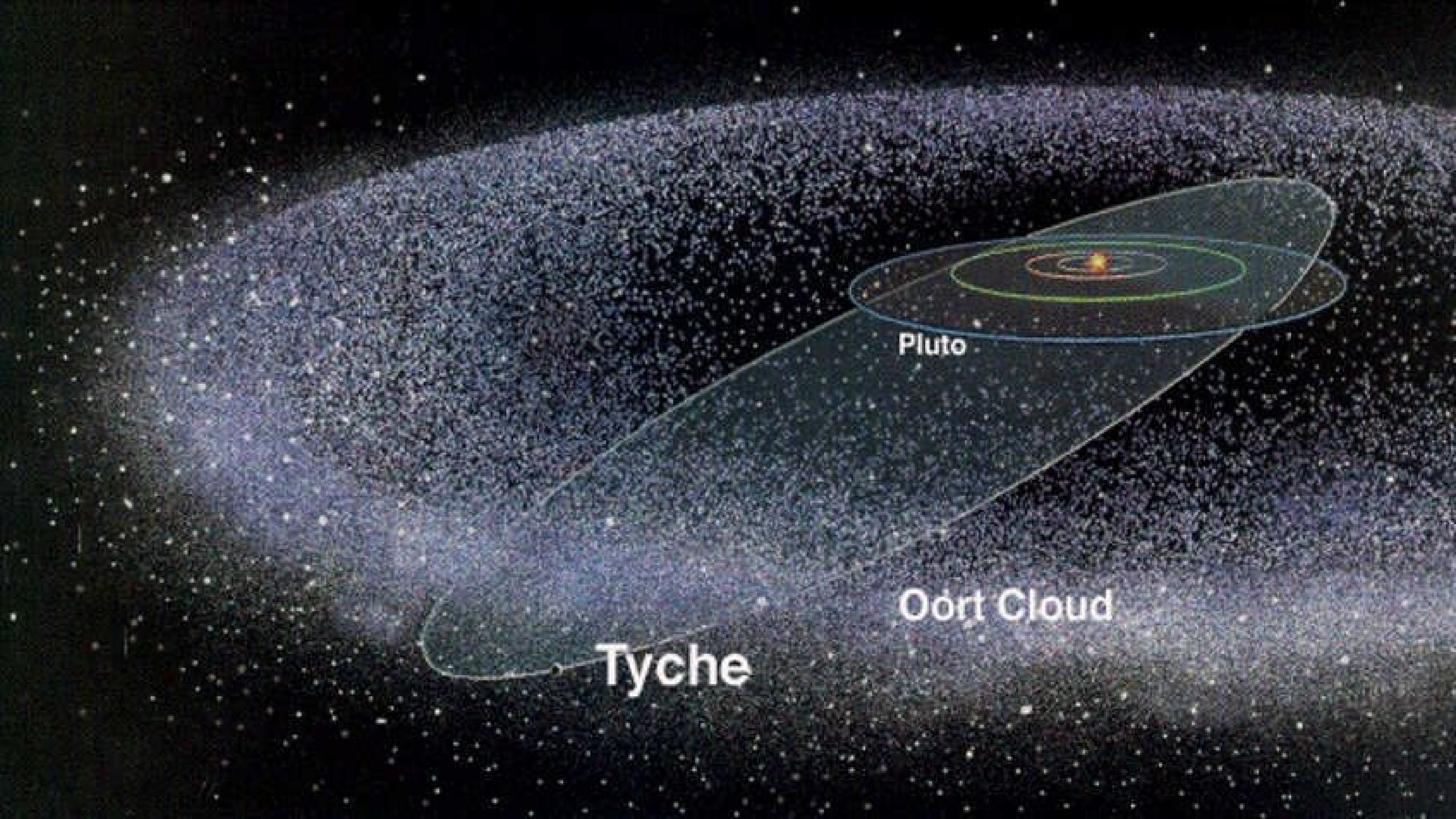Chapter 12 The Solar System

1
getwallpapers.com/collection/solar-system-backgrounds
2
curiosmos.com/Our solar system Solar System Animation formed about 4.6 billion years ago from a cloud of gas and dust called the solar nebula. The birth of the sun, which is the center of the solar system Figure 12.0.1.(a), began when a shock wave from a nearby supernova explosion triggered the collapse of a dense region of the nebula. This collapse caused the region to become hot and dense, and it eventually formed a protostar at its center. As the protostar continued to grow, it became increasingly hot and dense, until it reached a temperature and pressure high enough to initiate nuclear fusion. This process caused the protostar to emit energy in the form of light and heat, and it became a star the sun. Meanwhile, the remaining gas and dust in the solar nebula began to clump together due to gravity, eventually forming the planets, moons, asteroids, and other objects that make up the solar system. The planets closer to the sun, also known as inner planets or Terrestrial planets such as Mercury, Venus, Earth, and Mars, are rocky and relatively small, while the outer planets or Jovian planets such as Jupiter, Saturn, Uranus, and Neptune, are much larger and composed mainly of gas and ice. This process of planetary formation took place over hundreds of millions of years and is still ongoing, as smaller objects continue to collide and form into larger ones.
3
3d-solar-system.webflow.io/
Here all the distances are taken as an average distance of the planets from the Sun in astronomical units (AU). \(1 AU = 1.496\times 10^8 km.\) and the symbol \(\bigodot\) represents the Sun.
All the planets in our solar system are visible from Earth at various times, depending on their positions relative to the Sun and Earth. The five planets that are visible to the naked eye from Earth are Mercury, Venus, Mars, Jupiter, and Saturn. Mercury and Venus are called "inferior planets" because they orbit the Sun closer than Earth does, so they never appear very far from the Sun in the sky. Mercury is visible low on the horizon just after sunset or just before sunrise, and Venus is usually the brightest object in the sky after the Sun and the Moon. Mars, Jupiter, and Saturn are called "superior planets" because they orbit the Sun farther than Earth does, so they can appear anywhere in the sky. Mars is typically reddish in color and is visible in the evening sky, while Jupiter and Saturn are both visible in the late evening and early morning skies and are usually among the brightest objects in the sky, after the Moon and Venus. Uranus and Neptune, the two outermost planets, are also visible from Earth, but they are much fainter and require binoculars or a telescope to see.
